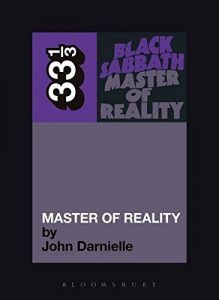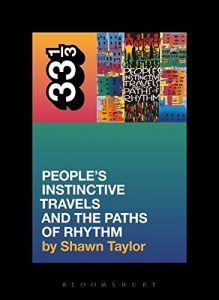
The 5 Best Books in the 33⅓ Series
What at first seems like another book series designed for impulse purchase, Bloomsbury’s 33⅓ is a surprisingly broad collection based on a simple premise: writers, musicians, and musicologists write a short book about an album they love. The series began in 2003 under the now-defunct Continuum Press and has racked up one hundred and thirty eight entries in the series and its spinoff 33⅓ Global.
While the obvious entry for cracking into the series is “buy the book about the album I like,” this list is curated with the more surprising entries into the series, when the writers pushed the premise to its editorial limits. Example: I hold Guns ‘n Roses and their racist, garbage noise rock in incredibly low regard, but Eric Weisbard’s history of Use Your Illusion I and II is a remarkable cultural history that explains why Axl Rose is such a loser without ever treating its subject with contempt.
The slim volumes are fun, digestible, and written with an intelligent enthusiasm that only these highly educated überfans could muster. These are the five best entries:
 No. 120 Angelo Badalamenti Soundtrack From Twin Peaks by Clare Nina Morelli
No. 120 Angelo Badalamenti Soundtrack From Twin Peaks by Clare Nina Morelli
There are only two soundtracks in the entire series, the first being Koji Kondo’s Super Mario Brothers, a brilliant introduction to video game music and composition, and the other The Twin Peaks Soundtrack. Clare Nina Morelli sets up the history of collaboration between David Lynch, Julee Cruise, and Angelo Badalamenti, and their atypical composition process (where David Lynch yells moods at Angelo, who improvises until they find a theme that fits) but then devotes the second half of the book to musical analysis of the four major melodies in the series. She breaks apart the title track, “Falling,” and how each of its harmonic ideas reshape and bend themselves to form every scene and mood in Lynch’s imagination. The clinical treatment of Badalamenti’s leitmotifs is tempered with Morelli’s academic affection for film and television scoring and her own loving history with the series and soundtrack.
 No. 32 Sly and the Family Stone’s There’s A Riot Going On by Miles Marshall Lewis
No. 32 Sly and the Family Stone’s There’s A Riot Going On by Miles Marshall Lewis
You should pick this up just to read Miles Marshall Lewis, a writer who has that passionate understanding of real-life characters that most journalists spend entire careers cultivating. Where many essayists would conclude ’70s fables with cynicism, he extracts the surprising and strangely touching. His entry into the 33⅓ series is an empathetic critical examination of Sly Stone’s masterwork. Sly’s own history is insane, even by the 1970s David-Bowie-Living-On-A-Diet-Of-Cocaine-and-Milk standards. There’s A Riot Going On was a concentration of America’s political turmoil distilled into one of the best albums of that era, and we are so damn lucky to have Miles Marshall Lewis unpack it for us.
 No. 56 Black Sabbath’s Master of Reality by John Darnielle
No. 56 Black Sabbath’s Master of Reality by John Darnielle
One of the few fictions in the the 33⅓ series, the 56th is the story of an institutionalized teenager told through prescribed diary entries. The language is richly melodramatic in a way that only a teenager (or in Darnielle’s case, an eternal teenager) could write. While the entries are desperate and tragic, they convey that universal sensation all adolescents hold at one point: how, at your most sensitive and impressionable age, music becomes one of the few outlets for expressing your personhood. Darnielle understands everyone had that one album that kept your fragile adolescent body together. Then he asked: “what if you took that away from someone?”
 No. 47 A Tribe Called Quest’s People’s Instinctive Travels and the Paths of Rhythm by Shawn Taylor
No. 47 A Tribe Called Quest’s People’s Instinctive Travels and the Paths of Rhythm by Shawn Taylor
Taylor roots himself into the album, the biography of his teenage self as a parallel story to A Tribe Called Quest’s debut. While this does have the highs and lows of a teenage self-awakening, it’s also funny as hell. Taylor’s anecdotes are entertaining enough to read aloud to friends. If you finish it in one sitting, you’ll be left with sore ribs and a nuanced appreciation of one of Hip Hop’s defining albums.
 Global No. 3 Supercell’s Supercell Featuring Hatsune Miku by Keisuke Yamada
Global No. 3 Supercell’s Supercell Featuring Hatsune Miku by Keisuke Yamada
Hatsune Miku has a repertoire of over 100,000 original songs. She speaks English, Japanese, and Chinese and has been touring internationally since 2009. She is eleven years old.
Hatsune Miku is a software vocaloid voicebank available for purchase online. Her “collaboration” with the J-Pop band Supercell is one of the most definitive albums of the Desktop Music wave of the mid 2000s. Yamada’s breezy history is a perfect introduction to a music scene that is deep, communal, and batshit crazy.





















